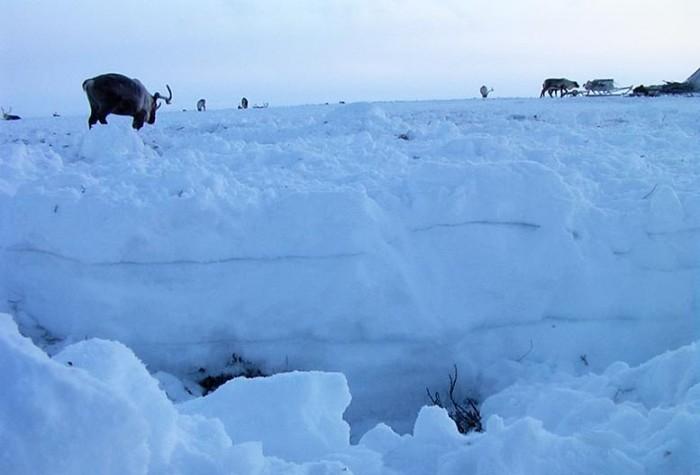A new study led by the University of Manitoba (UM) and co-authored by scientists at the University of Colorado Boulder's National Snow and Ice Data Center (NSIDC) points out that there will be more rain than snowfall in the Arctic, and that the shift will be decades earlier than previously predicted. The predictions of the latest model, published in the journal Nature Communications by an international team of researchers led by the University of Manitoba, show that the rate and extent of precipitation in the Arctic are expected to increase dramatically, and that most of these future events will be rain.

This shift occurs due to rapid warming in the Arctic, sea ice loss and polar thermal transport. "People might say, 'Well, what does this have to do with me?' Well, it's going to affect you, and in fact, it's going to affect you right now. Lead researcher Michelle McCrystall said: "These changes have huge implications, which we point out in the paper, such as fewer snow covers, increased permafrost melting, more sleet events, and greater flood events due to increased river discharges, all of which have implications for wildlife populations and human livelihoods." He is a postdoctoral fellow at the UM Center for Earth Observation Sciences in clayton H. RidDell's School of Environment, Earth and Resources.
It is predicted that this transition from the Arctic to an era dominated by rain will begin at different times depending on the season and region. For example, in the fall, these new models predict that this transition will occur between 2050 and 2080, while older models predict that this transition will occur between 2070 and 2090. And as the researchers prepared their report, in August of this year, the highest point of the Greenland ice sheet had its first ever rainfall, which could be said to be a harbinger.
"We're getting rain on the top of Greenland right now, and we're probably going to get more rain in the future — that's a bit of a surprise to me," McCrystall said. "When we talk about what happened in 2100, it seems like a long process, but it's only 80 years. That's the next generation. If we continue our trajectory, many problems may come sooner than we predict. "
The paper, titled "New Climate Models Reveal Faster and Greater Growth in Arctic Precipitation Than Previously Predicted," warns that reduced snow cover will further exacerbate Arctic and global warming through albedo feedback, increased carbon dioxide fluxes in winter, release of methane from soils, and melting of permafrost.
Precipitation changes will also affect soil moisture and groundwater, as well as the underground fungal network that supports all surface plants. And more rain than snow events can wreak havoc on wild reindeer, reindeer and musk animal populations. Rainwater can freeze and form ice, preventing them from accessing food buried under the snow. But migratory bird populations in the Arctic are expected to reproduce better in these warmer and wetter conditions.
"The problem we face today is that the Arctic is changing so fast that wildlife in the Arctic may not be able to adapt," said Mark Serez, co-author of the study and director of the National Ice and Snow Data Center. "It's not just a problem of reindeer, reindeer and musk cattle, it's also a problem of the northern humans who depend on them."
The research team — including members from University College London, the University of Colorado-Boulder, the University of Lapland and the University of Exeter — noted that if we can maintain global warming below 1.5 degrees Celsius, some of these projected changes (i.e., transitions to precipitation-dominated precipitation) may not occur in some parts of the Arctic. But if we continue on our current trajectory, given current global policies, which means we could reach 3 degrees Celsius of global warming by the end of the century, then this shift could happen.
"The new model couldn't be clearer, unless global warming is stopped, the Arctic of the future will be much wetter; the once frozen oceans will become open waters and rain will replace snow," said co-author Professor James Spencer of the University of Exeter's Department of Mathematics and the Institute for Global Systems Research.
What this precipitation transition means for sea ice– a major landscape feature in the Arctic – is unclear. In short, more rain means more fresh water on the ocean surface, which may contribute to the growth of sea ice, but more precipitation is associated with more heat, which will reduce the growth of sea ice.